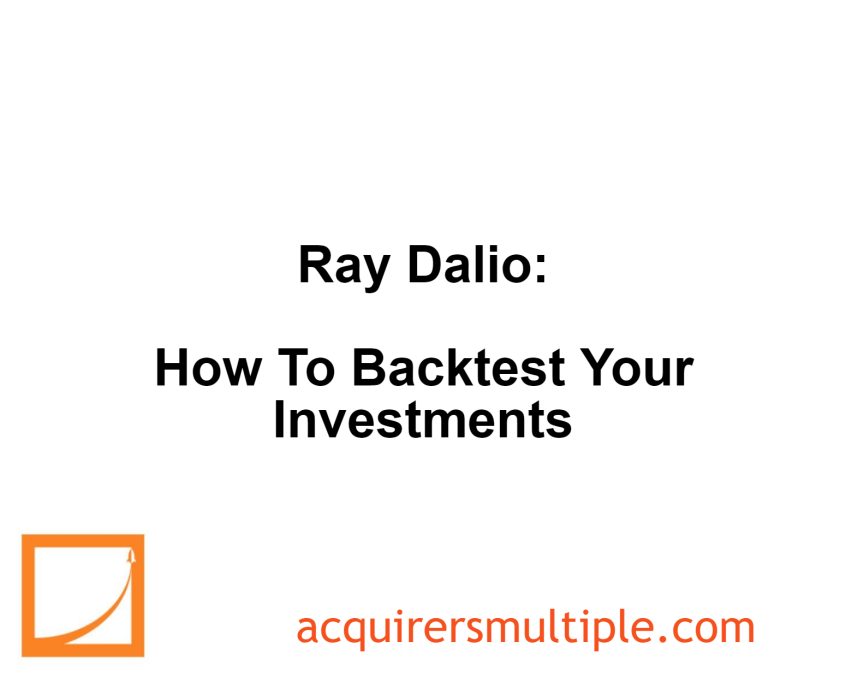During his recent interview on the RWH Podcast, Ray Dalio explained how you should backtest your investments. Here’s an excerpt from the interview:
Dalio: It’s the same thing, just more so. The average investor, as you point out, is not going to be successful. Like you say Bridgewater has about 1300 employees. We spent hundreds of millions of dollars on research of various types of things.
We try to get an edge, and then we’re still looking for that power of the diversification. The markets are a zero sum game. What I mean is it’s like poker, somebody’s going to take money away from somebody else in terms of that zero sum. And it’s more difficult for, to compete in than the Olympics.
It’s more rewarding. More people change it. You wouldn’t say, I’m going to go compete in the Olympics. It’s very difficult to compete in the markets. So I would say the humility should be very high. That means the diversification also should be very high. And then you know, we could spend a lot of time on what type of diversification you need.
It’s particularly, almost easy to do in the markets because the markets almost make all the bets more equal than you would imagine.
Because it’s like betting on… in a horse race. And now what happens is they’re faster horses and they’re slower horses, but the odds are adjusted for that.
So you can be equally likely to bet on the least likely horse to win, and it’ll have the same expected value as betting on the most likely horse because of the way that they’re handicapped.
And the same thing exists in the markets. It’s almost like they’re, almost the markets will make them more equal in terms of that edge. So what it means is that that diversification’s important. Now what do you diversify?
You have to understand a little bit about what makes markets move together and not, and I don’t think you want me to digress into that, but you can see, you can just even look at how things have changed over time.
But it’s something that we’re not going to be able to cover, you know, here now, because it’s just too lengthy.
But yes, and you could go back and you could see, ask whoever you’re asking about the investments, go back and take them to the year 2000, each one of them. I go back to 1900, but maybe it’s not so easy for you to go back to 1900.
But if you take that investment and you see how the one did, and then you see how they did in relationship to the other, and you go through 2008, or you go through this period recently, you could see how they performed and how they performed in relationship to each other and how the diversification would’ve worked.
So those are the things that should be done I think.
You can watch the entire discussion here:
For all the latest news and podcasts, join our free newsletter here.
Don’t forget to check out our FREE Large Cap 1000 – Stock Screener, here at The Acquirer’s Multiple:



